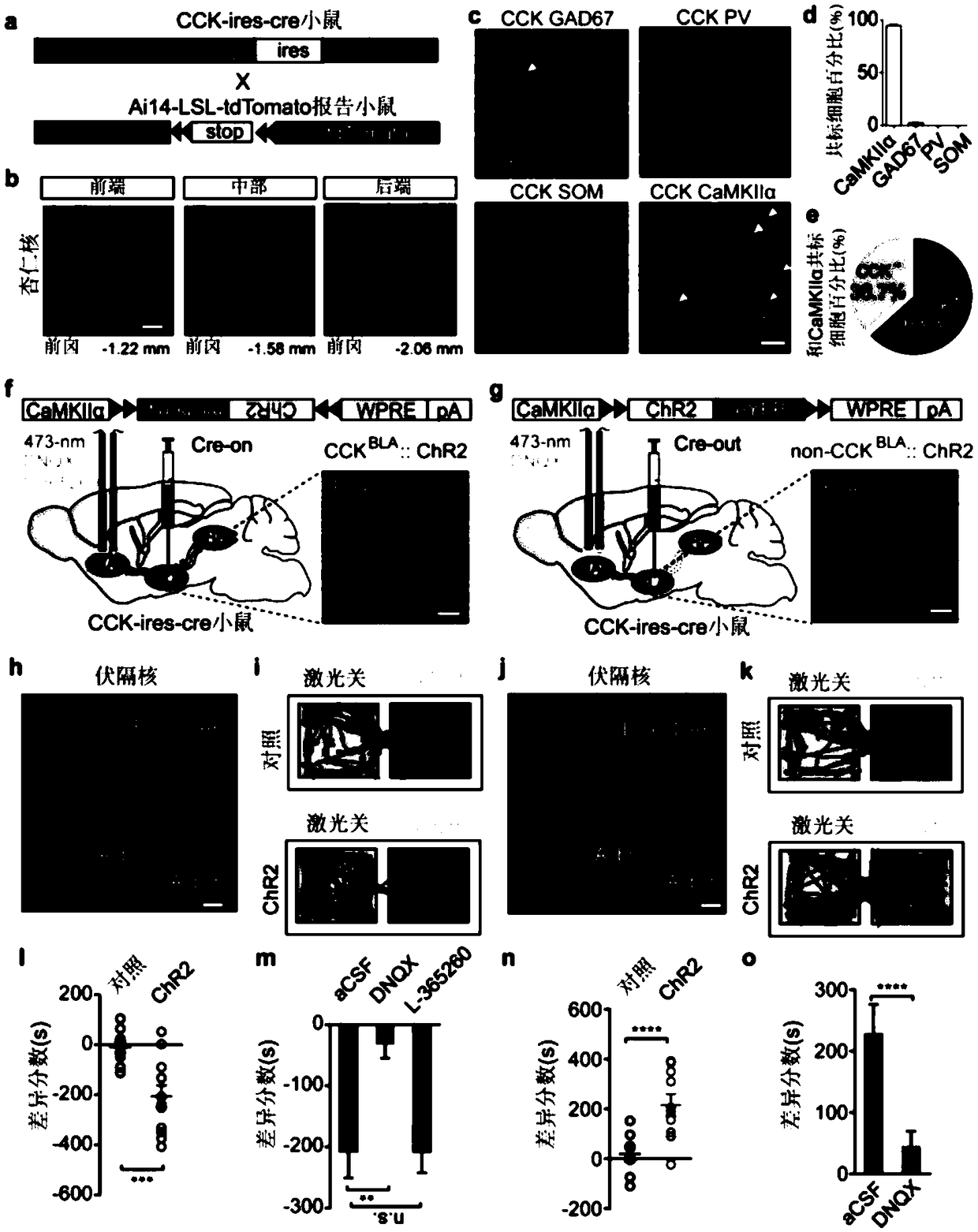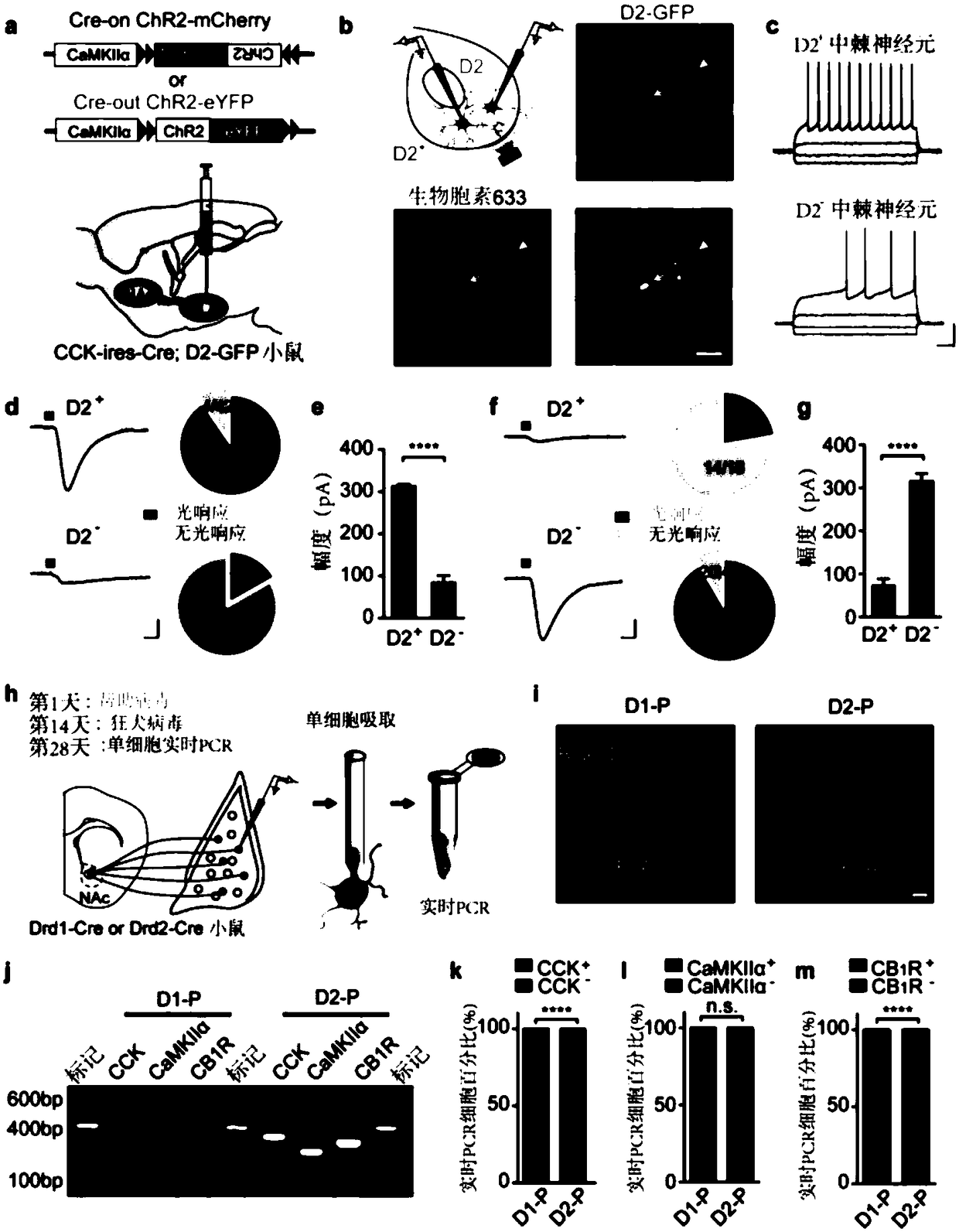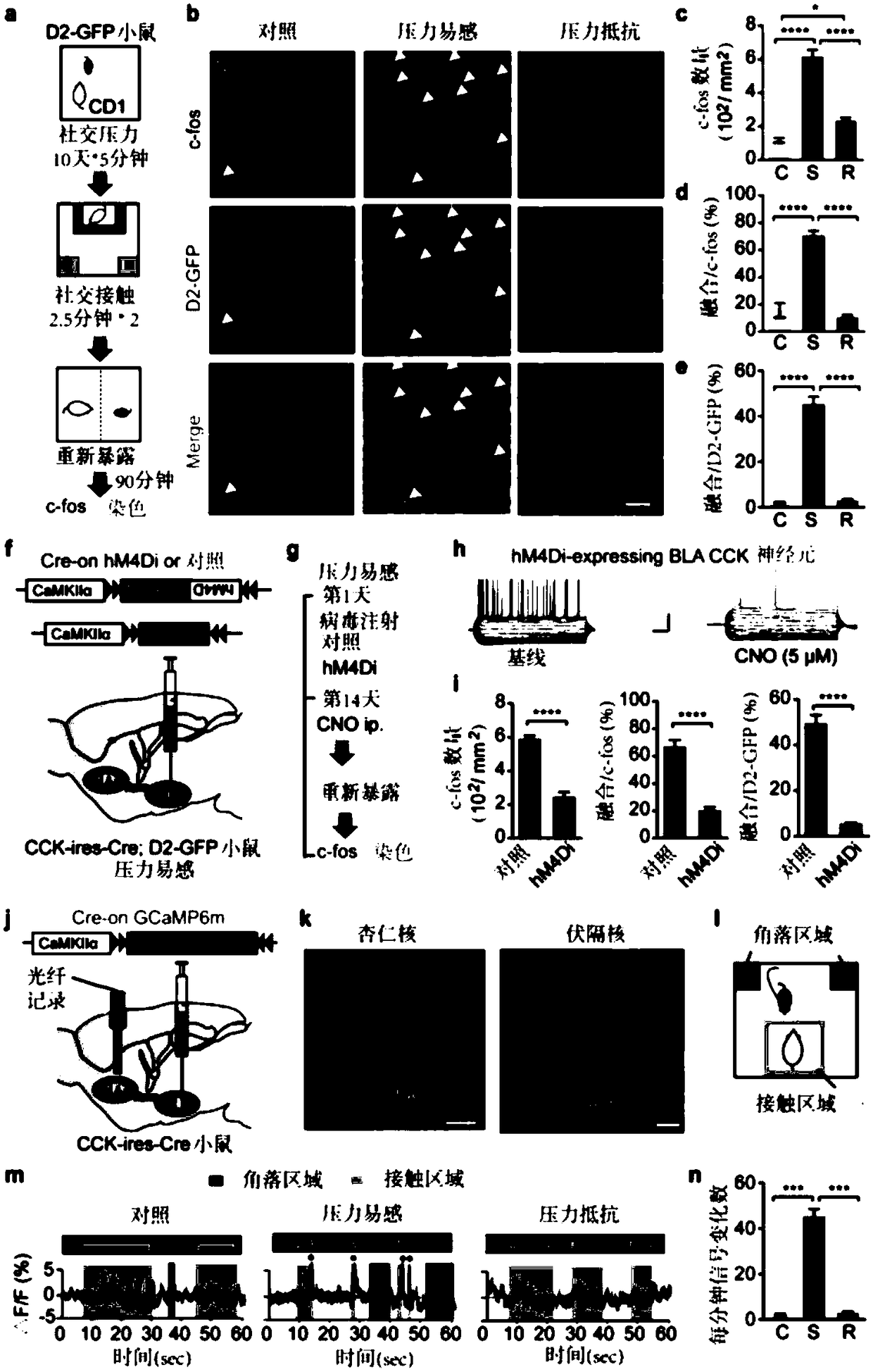Method and kit for diagnosing depression
A technology for depression and kits, applied in the field of disease diagnosis, can solve problems such as increasing the risk of severe depression
- Summary
- Abstract
- Description
- Claims
- Application Information
AI Technical Summary
Problems solved by technology
Method used
Image
Examples
Embodiment 1
[0056] Embodiment 1 Materials and methods
[0057] Virus
[0058] To achieve selective photoactivation or photoinhibition of BLA CCK glutamatergic neurons, the BLA of CCK‐ires‐Cre mice was injected with AAV2 / 9‐CaMKIIα‐Cre on‐ChR2(H134R)‐mCherry virus (viral titer : 4.5×10 12 particles / mL), or AAV2 / 9‐CaMKIIα‐Cre on‐Arch3.0‐eYFP virus (virus titer: 3.6×10 12 particles / mL). In order to achieve chemogenetic activation or inhibition of BLA CCK glutamatergic neurons, the BLA of CCK‐ires‐Cre mice was injected with AAV2 / 9‐CaMKIIα‐Cre‐on‐hM3Dq‐mCherry virus (virus titer: 3.5 ×10 12particles / mL), or AAV2 / 9‐CaMKIIα‐Cre on‐hM4Di‐mCherry virus (virus titer: 2.2×10 12 particles / mL).
[0059] To achieve selective photoactivation or photoinhibition of BLA non-CCK glutamatergic neurons, the BLA of CCK‐ires‐Cre mice was injected with AAV2 / 9‐CaMKIIα‐Cre out‐ChR2(H134R)‐eYFP virus (viral titer Degree: 1.8×10 12 particles / mL) or AAV2 / 9‐CaMKIIα‐Cre out‐Arch3.0‐eYFP virus (virus titer: 3.6×1...
Embodiment 2
[0110] Example 2 Cholecystokinin CCK as a marker of amygdala glutamatergic neurons subdividing mediating opposite emotional valences
[0111]To visualize CCK-expressing neurons in the amygdala, mice expressing Cre recombinase under the cholecystokinin promoter (CCK-ires-Cre) and Cre-dependent expression of tdTomato (tdT) reporter mice (Ai14-LSL ‐tdT) for hybridization ( figure 1 a). CCK-positive neurons were predominantly distributed rostral to caudal to the basolateral amygdala BLA rather than the central amygdala (CeA) (figure 1b).
[0112] To test whether CCK-positive neurons in the BLA are also inhibitory GABAergic neurons, immunofluorescence ( figure 1 c) To detect (1) glutamic acid decarboxylase 1 (GAD 67), a marker of inhibitory GABAergic neurons; (2) parvalbumin (PV), a marker of GABAergic neuron subtypes; (3) growth inhibitory (SOM), a marker for GABAergic neuron subtypes; and (4) CaMKIIα, a marker for excitatory glutamatergic neurons. Surprisingly, it was found t...
Embodiment 3
[0114] Example 3 Cholecystokinin-positive neurons and negative neurons projecting to the nucleus accumbens mediate opposite emotional valences, respectively
[0115] To test whether parallel cholecystokinin-positive glutamate neuron and cholecystokinin-negative glutamate neuron circuits from BLA to NAC mediate similar or different behavioral phenotypes, respectively, the aforementioned Cre-on and Cre The ‐out strategy selectively activates cholecystolin-positive or cholecystin-negative glutamatergic neurons and is validated in real-time light-evoked place preference or place aversion experiments. Unexpectedly, optogenetic activation of cholecystin-positive glutamatergic neurons projecting to the nucleus accumbens when selectively administered to one side of the two-box experiment resulted in a decrease in the time mice spent on this one ( figure 1 i, l), which shows that activation of this circuit produces behavioral aversion. In order to confirm this behavioral aversion, dur...
PUM
| Property | Measurement | Unit |
|---|---|---|
| Titer | aaaaa | aaaaa |
| Titer | aaaaa | aaaaa |
| Titer | aaaaa | aaaaa |
Abstract
Description
Claims
Application Information
 Login to View More
Login to View More - R&D
- Intellectual Property
- Life Sciences
- Materials
- Tech Scout
- Unparalleled Data Quality
- Higher Quality Content
- 60% Fewer Hallucinations
Browse by: Latest US Patents, China's latest patents, Technical Efficacy Thesaurus, Application Domain, Technology Topic, Popular Technical Reports.
© 2025 PatSnap. All rights reserved.Legal|Privacy policy|Modern Slavery Act Transparency Statement|Sitemap|About US| Contact US: help@patsnap.com



